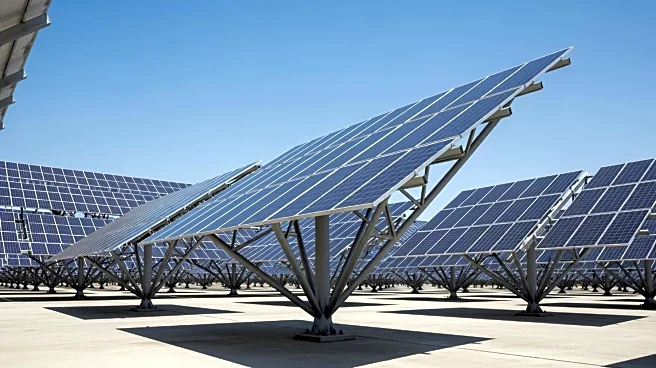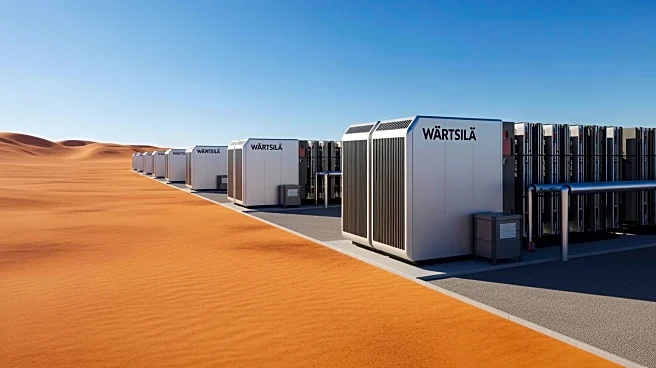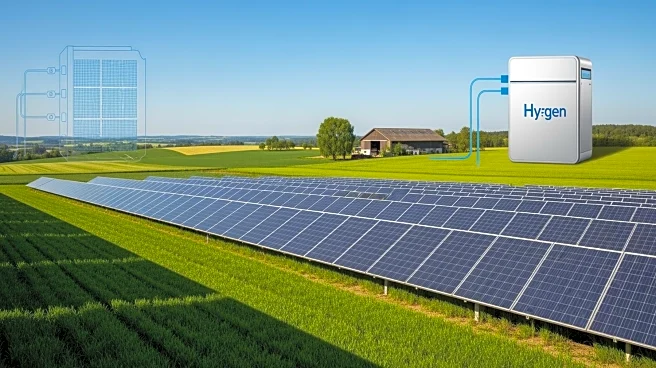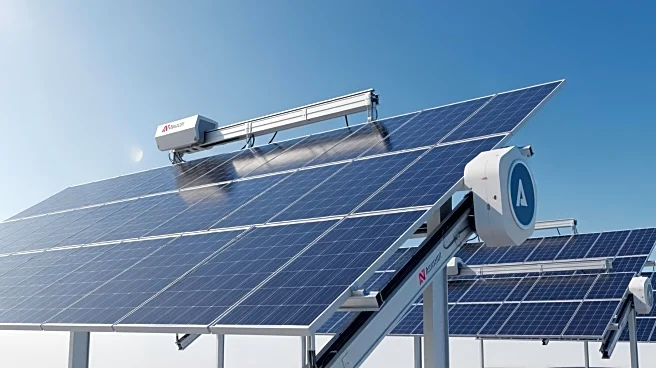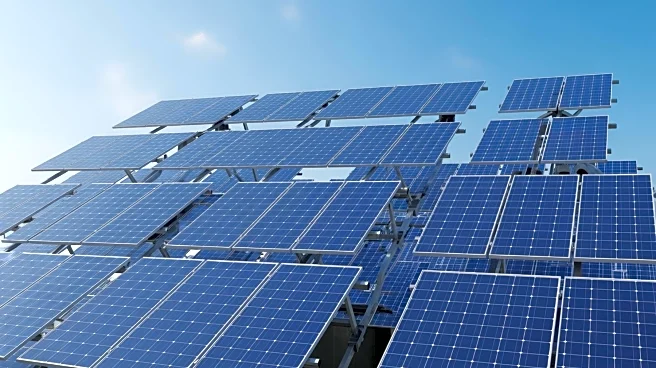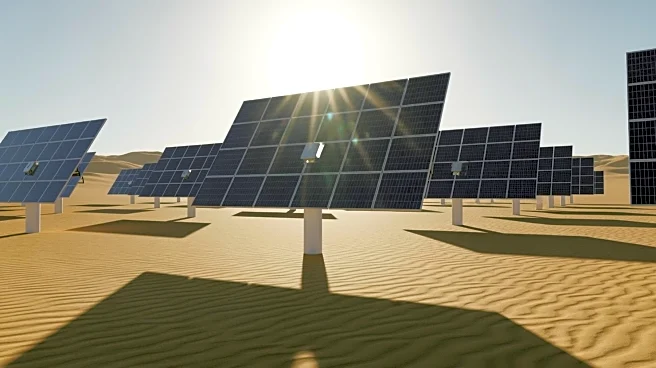What's Happening?
Nextracker, a prominent solar technology platform provider, has introduced its NX Earth Truss foundation solution in Australia. This initiative is supported by the Australian Renewable Energy Agency (ARENA) to facilitate large-scale solar deployment across
the country. The NX Earth Truss is designed to address the challenges of constructing solar projects on rocky and hard soil terrains, which are prevalent in Australia. By minimizing grading and preserving natural vegetation, the solution aims to reduce construction costs and complexity, thereby accelerating project timelines. The technology features the NX Truss Driver, a semi-autonomous drilling machine that installs foundations efficiently, reducing labor hours and construction risks. This development marks the first deployment of the system outside North America, following its successful launch there last year.
Why It's Important?
The introduction of the NX Earth Truss solution is significant for Australia's renewable energy sector, as it opens up new opportunities for solar development on previously unsuitable land. By overcoming land-use constraints, the technology can fast-track solar project delivery, which is crucial as Australia aims to expand its renewable energy capacity rapidly. This advancement not only benefits developers and EPCs by providing greater flexibility and reduced project risk but also supports Australia's clean energy transition. The solution's ability to improve the viability of building in remote sites can attract more investments and broaden opportunities for communities, contributing to the country's energy goals.
What's Next?
With the deployment of the NX Earth Truss solution, Nextracker plans to continue strengthening local manufacturing and supply chain resilience in Australia. The company is collaborating with partners like Orrcon Steel and Baojia, supported by the Queensland Government, to enhance workforce development in the energy sector. As the technology gains traction, it is expected to facilitate more utility-scale solar projects, potentially influencing policy decisions and investment strategies in Australia's renewable energy landscape. Stakeholders, including developers and government agencies, may respond by increasing support for similar innovations that address environmental and logistical challenges in solar deployment.
Beyond the Headlines
The NX Earth Truss solution not only addresses technical and logistical challenges but also has broader implications for environmental sustainability. By preserving natural vegetation and minimizing land disturbance, the technology aligns with ecological conservation efforts. Additionally, the increased automation and reduced labor requirements could lead to shifts in workforce dynamics within the solar industry, potentially impacting employment patterns and skill development. As Australia continues to pursue its renewable energy targets, such innovations could play a pivotal role in shaping the country's energy infrastructure and environmental policies.
